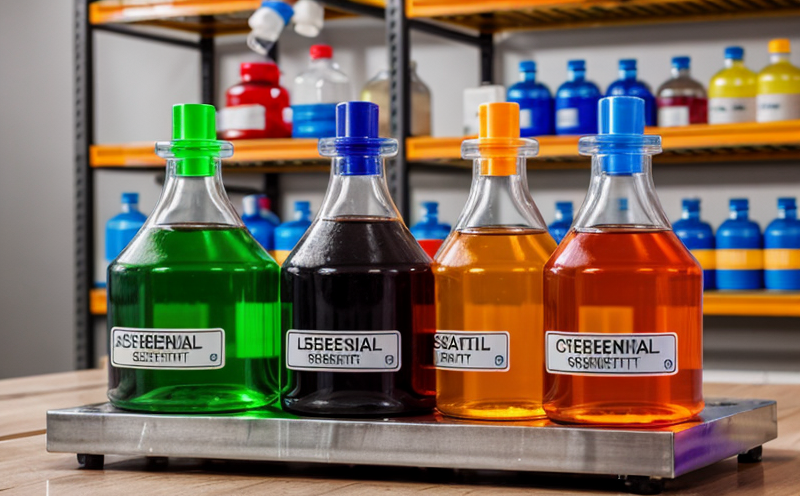Residual Solvent Testing in Consumer Products
Residual solvent testing is a critical procedure that ensures consumer products are free from harmful solvents. In many sectors, including pharmaceuticals, food and beverage, textiles, and personal care, the use of residual solvents during manufacturing processes can lead to contamination if not properly managed. This contamination can pose significant health risks to consumers, especially when these contaminants are volatile organic compounds (VOCs) or hazardous substances.
The process involves identifying and quantifying any trace amounts of solvents that remain in a final product after the manufacturing phase. These solvents include those used during extraction, synthesis, or formulation processes. Regulatory bodies around the world have established limits on acceptable levels of residual solvents to protect public health and ensure compliance with safety standards.
The testing methodology typically follows international standards such as ISO 10350-2 for pharmaceuticals, ASTM D946 for polymers, and specific standards like ASTM E1533 for food products. Compliance with these standards is essential to ensure that manufacturers meet the necessary safety requirements.
The testing process involves several key steps, including:
- Sample preparation: The sample is collected and prepared according to laboratory protocols.
- Extraction: Depending on the product type, solvents may be extracted using various methods such as solvent washing or headspace gas chromatography (HS-GC).
- Quantification: Once extracted, the residual solvents are quantified using sophisticated analytical instrumentation like gas chromatography-mass spectrometry (GC-MS).
The results of this testing ensure that consumer products meet regulatory standards and do not contain hazardous levels of residual solvents. This process is vital for maintaining product safety and protecting consumers from potential health risks.
Industry Applications
- Pharma & Biotech: Ensuring that medications are free from harmful solvents used in synthesis or formulation processes.
- Food & Beverage: Testing for residual solvents that may have been used during the production of beverages, such as alcohol in wine or beer.
- Textiles & Apparel: Verifying that textiles are free from solvents like dimethylformamide (DMF) which can be harmful if not properly removed post-processing.
- Pesticides & Herbicides: Monitoring for residual solvents used in the formulation of agricultural chemicals to ensure compliance with environmental regulations.
The importance of residual solvent testing extends beyond mere compliance. It plays a crucial role in protecting public health and ensuring product safety across various industries where solvents are commonly utilized.
Why Choose This Test
- Regulatory Compliance: Ensures adherence to international standards such as ISO 10350-2 and ASTM E1533.
- Health & Safety: Protects consumers from potential health risks associated with the presence of harmful solvents in consumer products.
- Quality Assurance: Guarantees that products meet high-quality standards, enhancing brand reputation and trust.
- Risk Management: Identifies potential risks early on, allowing for timely corrective actions to be taken.
The benefits of residual solvent testing go beyond mere compliance. By conducting these tests, manufacturers can ensure that their products are safe, reliable, and meet the highest quality standards. This not only protects consumers but also enhances brand reputation and trust in the market.
Environmental and Sustainability Contributions
Residual solvent testing contributes significantly to environmental protection and sustainability efforts. By ensuring that consumer products are free from harmful solvents, manufacturers can reduce the risk of contamination during use or disposal. This reduces the burden on landfills and incineration facilities, promoting a more sustainable approach to product stewardship.
The testing process itself is designed with environmental considerations in mind. For instance, advanced analytical techniques like GC-MS minimize waste generation by using efficient sample preparation methods. Additionally, the use of standardized procedures ensures that minimal amounts of reagents are used, further reducing environmental impact.
By adopting residual solvent testing as part of their quality management system, manufacturers can contribute to broader sustainability goals. This includes reducing the overall carbon footprint associated with product lifecycle and promoting a circular economy by ensuring products are safe for recycling or composting.





